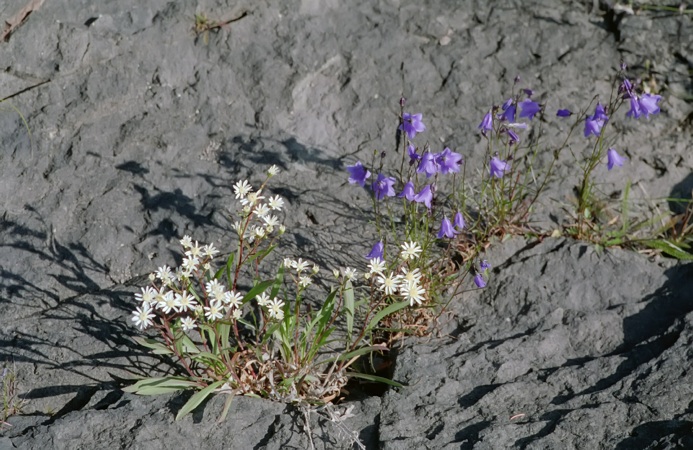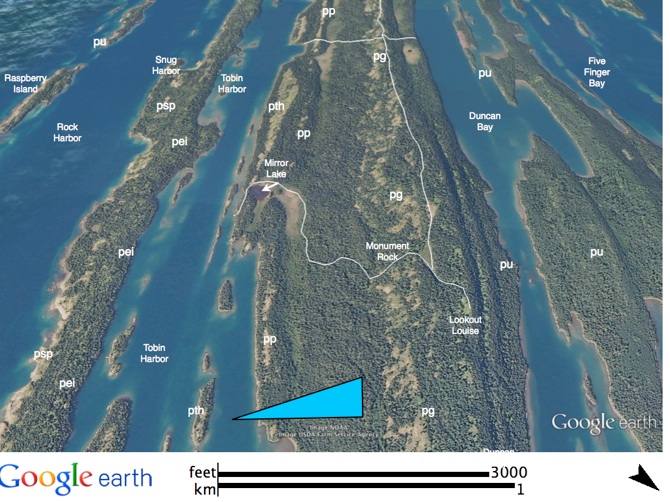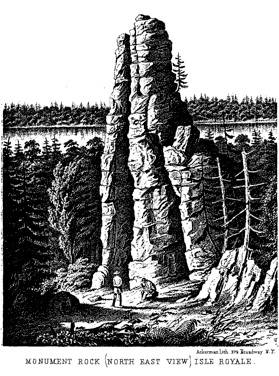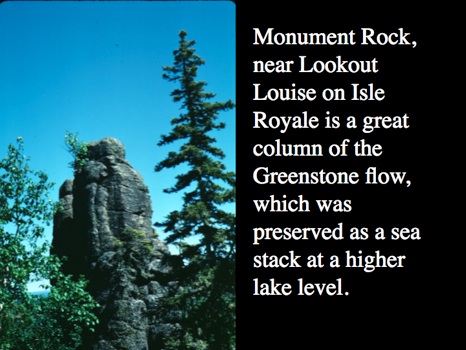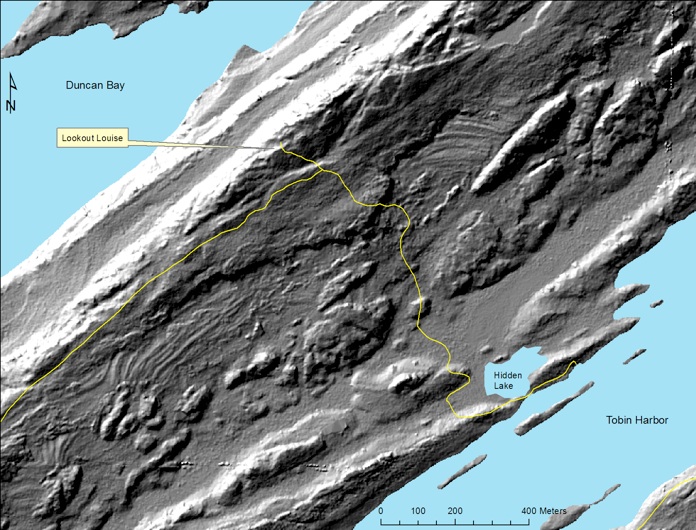Lookout Louise
From Hidden Lake to Lookout Louise, we will hike about 1.6 km (1 mi) long and 85 m (280ft.) up. We will begin on the Tobin Harbor flow, but after passing the lake we will walk on the Greenstone flow, following a dip slope up to Lookout Louise. At about the halfway point, the trail passes Monument Rock, an individual column from the colonnade of the upper ophite that is exposed as an erosional remnant. Huber (1983, see especially pp 47-55) suggests that Monument Rock was formed by wave cut shoreline processes along a former "raised" shoreline, which he associates with glacial Lake Minong, about 10 Ka. From Lookout Louise we will look over the steep, anti-dip slope of the lower ophite and see Five Finger Bay, Duncan Narrows, and Amygdaloid Island.


